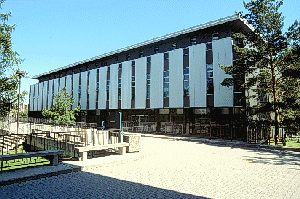PDF
Manufacturing paradise: tourism, development and mythmaking on Prince Edward Island 1939-1973 Item Info
- Title:
- Manufacturing paradise: tourism, development and mythmaking on Prince Edward Island 1939-1973
- Creator:
- McRae, Matthew John
- Date Created:
- 2004
- Degree Awarded:
- Master of Arts
- Subjects:
- tourism development automobile
- Geographical Focus:
- Canada Prince Edward Island
- Supporting Materials:
- n/a
- Description:
- Tourism is today Prince Edward Island’s second-largest industry and an integral part of Island society. Despite the industry's current importance, Island historians have generally neglected the study of tourism’s development in the twentieth century. Those who have given Island tourism scholarly attention have often downplayed its historical importance. This thesis argues that tourism played a transformative role in the history of twentieth-century Prince Edward Island, particularly in the post war era. Tourism growth on twentieth century Prince Edward Island largely occurred as a result of external factors, such as the development of the automobile as a reliable and affordable means of travel and the ever-increasing affluence and mobility of post Second World War North Americans. Some members of the Island’s political and commercial elite recognized tourism’s economic potential and tried to develop the industry. Island tourism promoters sold the Island to tourists as an anti-modern Garden of Eden while simultaneously selling tourism to the Island government as a means of attracting economic development and achieving prosperity. There was a contradiction built into this tourism strategy, however: On one hand tourism depended on the Island’s anti- modern image to attract visitors. On the other hand, this anti-modern image became ever more difficult to maintain as increasing tourism brought increasing progress and development. The rate of tourist development increased sharply as the federal government became involved in resolving the issue of regional economic disparity. Island tourism promoters used Charlottetown’s status as ‘the birthplace of Confederation to sell tourism to the federal government as an economic development tool. Festivals were held in 1939 and 1964 to commemorate the Island’s birthplace status. The success of these celebrations helped engender a spirit of cooperation between the federal and provincial government. By the mid-1960s it was generally accepted by both federal and provincial government planners that tourism responded well to carefully-planned capital investments and could serve as a useful economic development tool. In 1969, when the federal and provincial government signed the Comprehensive Development Plan, a fifteen-year scheme designed to modernize the Island's economy and society, tourism was a central plank in the Plan and received unprecedented funding from both Ottawa and Charlottetown. The Plan’s modernizing message could not be reconciled with tourism’s promotion of an anti-modern paradise, however. Some Islanders began to scrutinize their province’s anti-modern mythology and question the desirability of tourist development. When yet another celebration was held in 1973 1o commemorate the 100™ anniversary of Island joining Confederation, it became the stage for a debate between competing visions of Prince Edward Island society, and the role tourism had come to play in that society.
Source
- Preferred Citation:
- McRae, Matthew John. Manufacturing paradise: tourism, development and mythmaking on Prince Edward Island 1939-1973. 2004. Carleton University, Master of Arts.
- Reference Link:
- https://cuhistory.github.io/grads/items/hist_158.html
Rights
- Rights:
- Copyright the author, all rights reserved, unless otherwise indicated.

